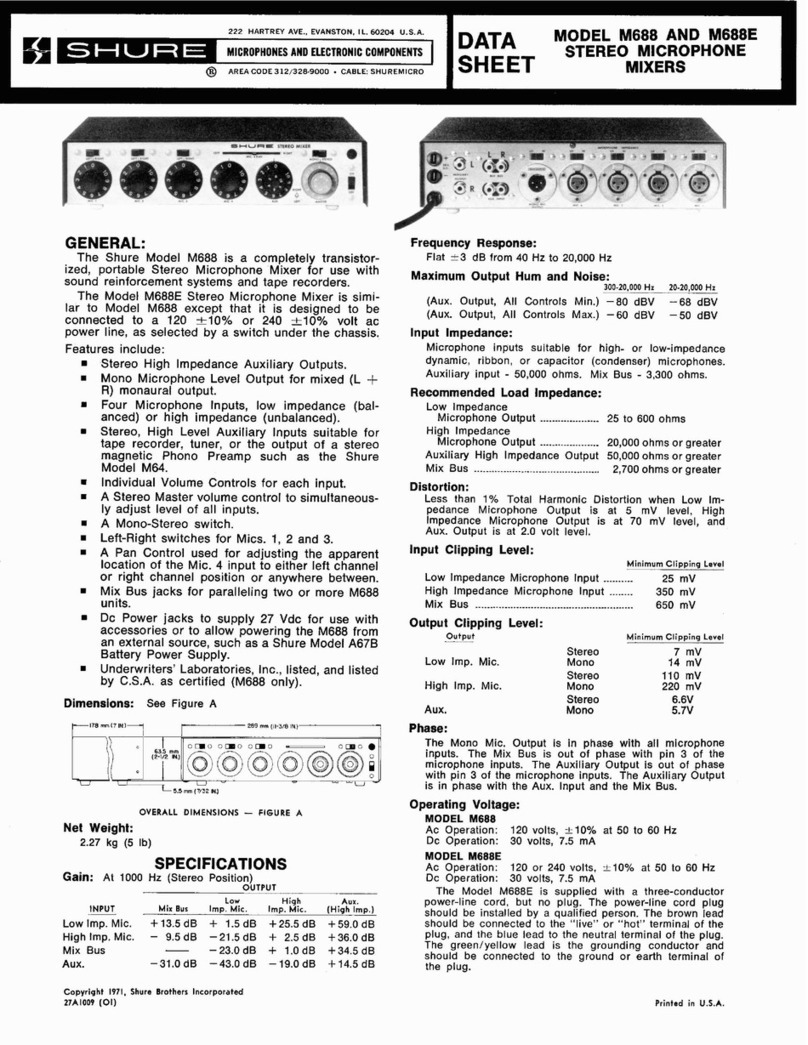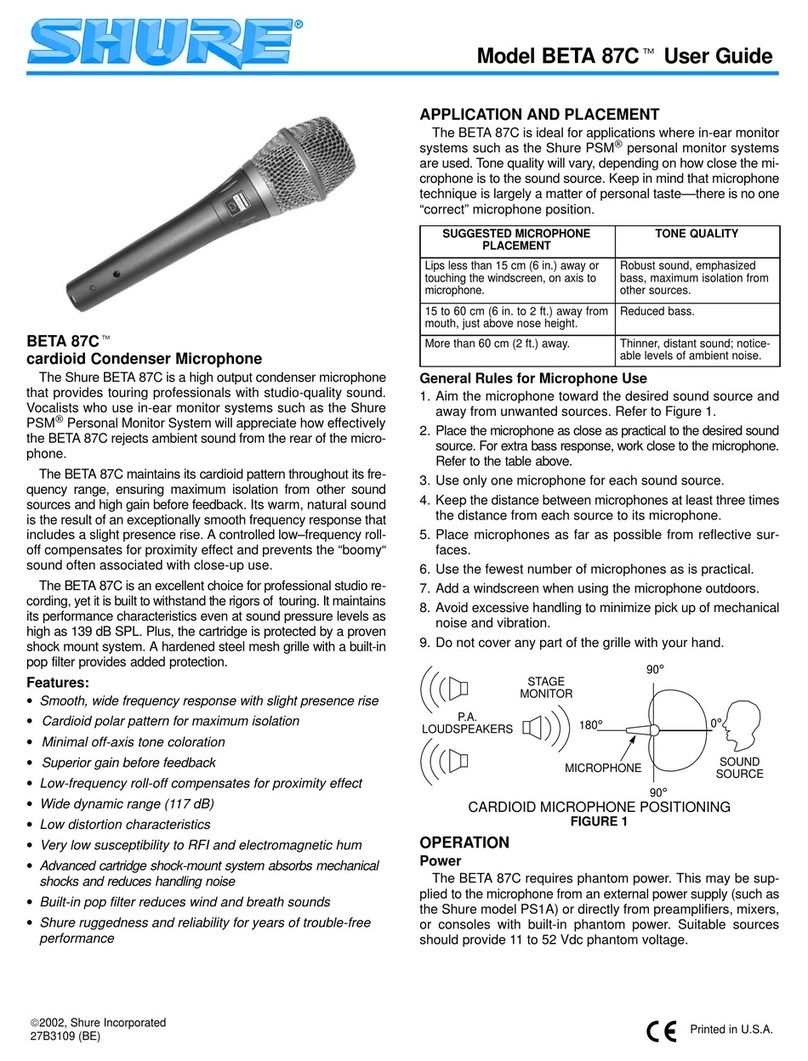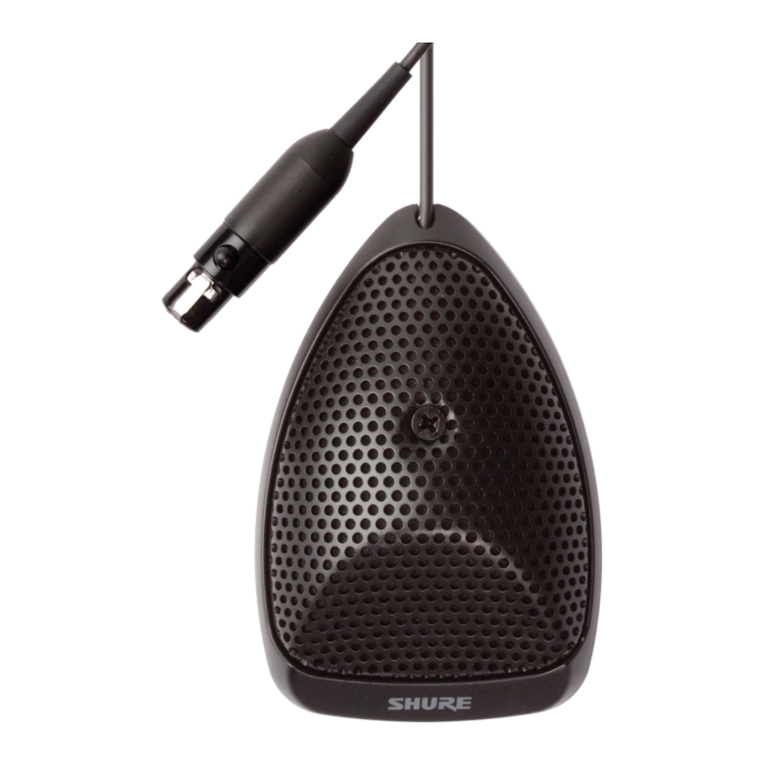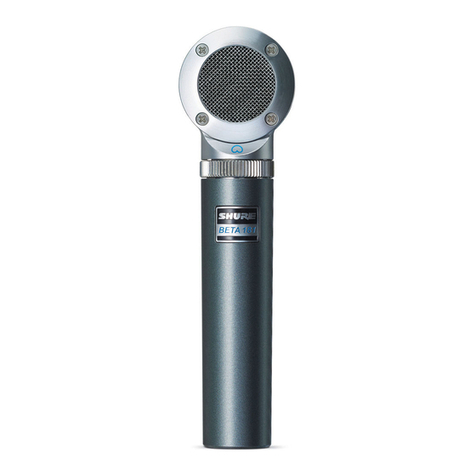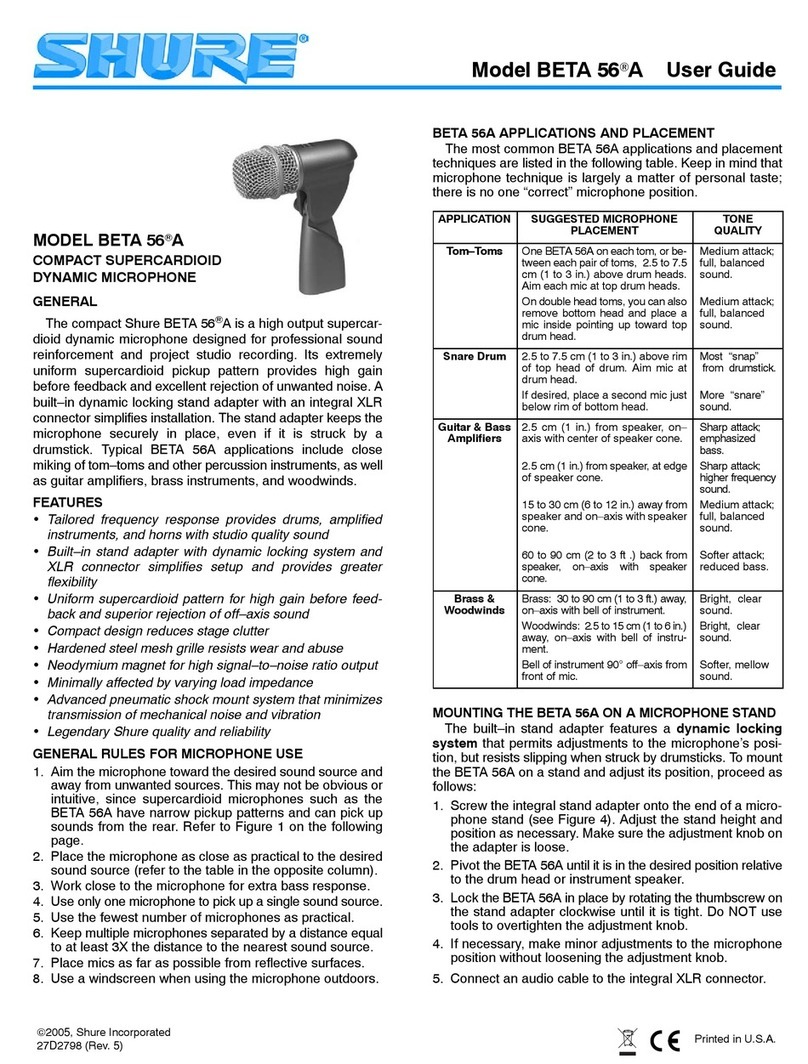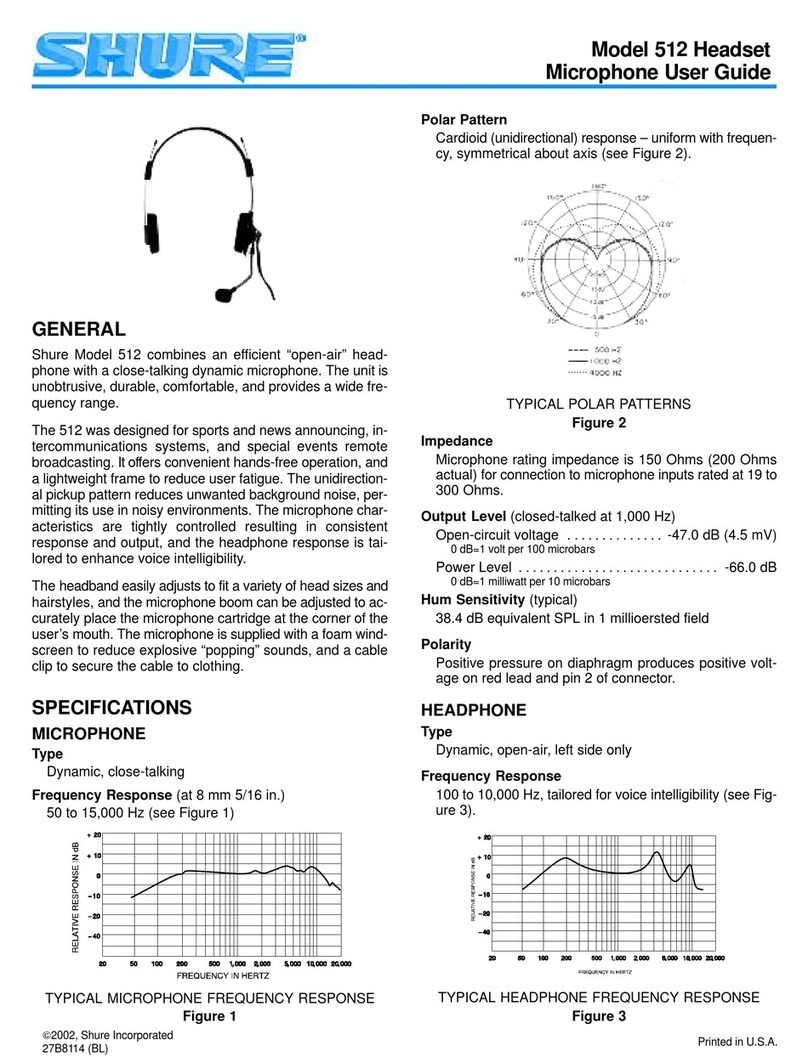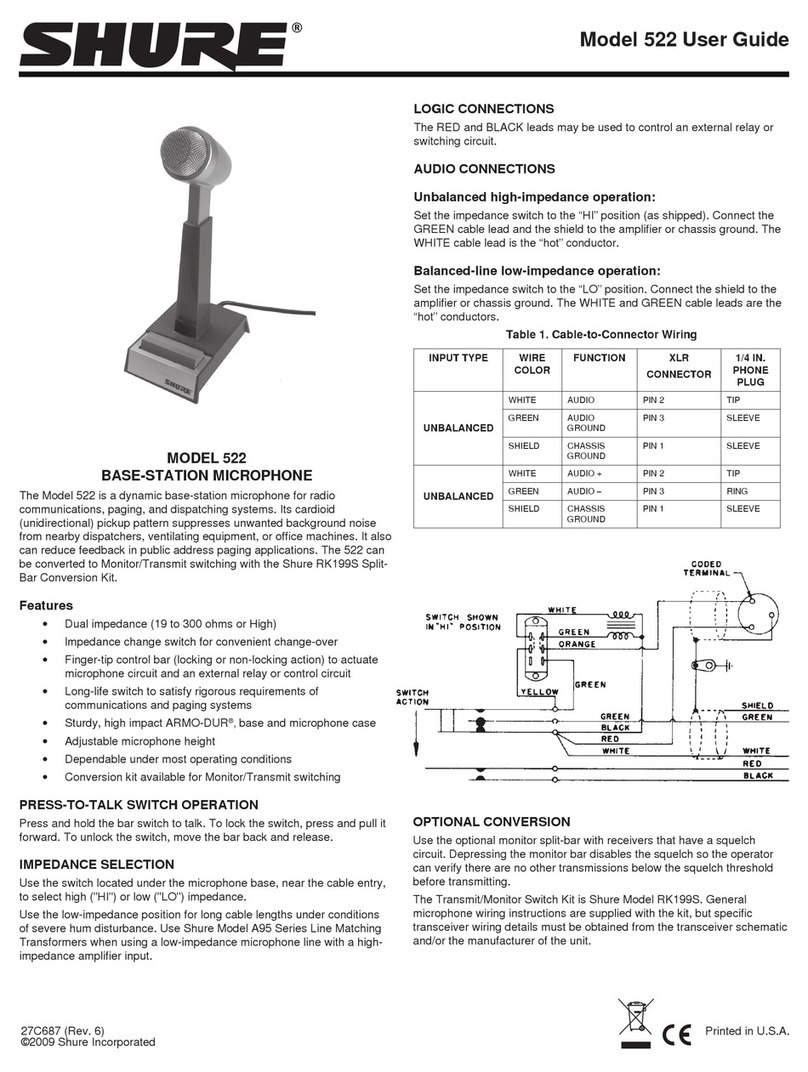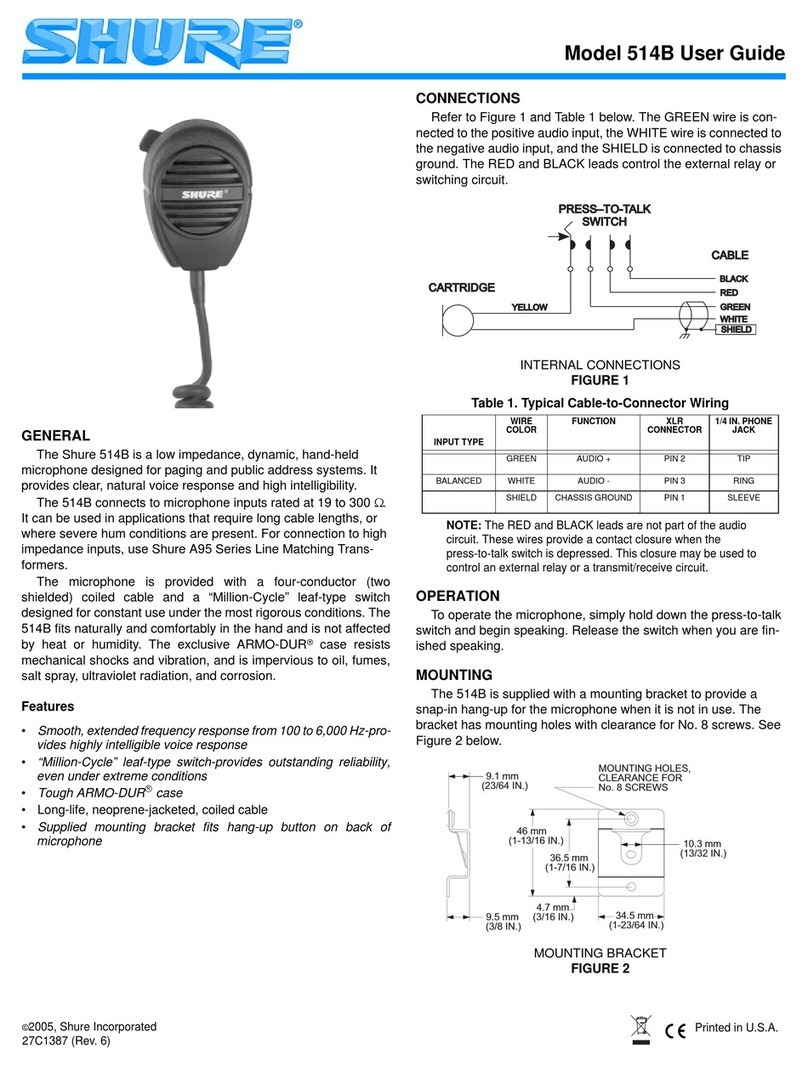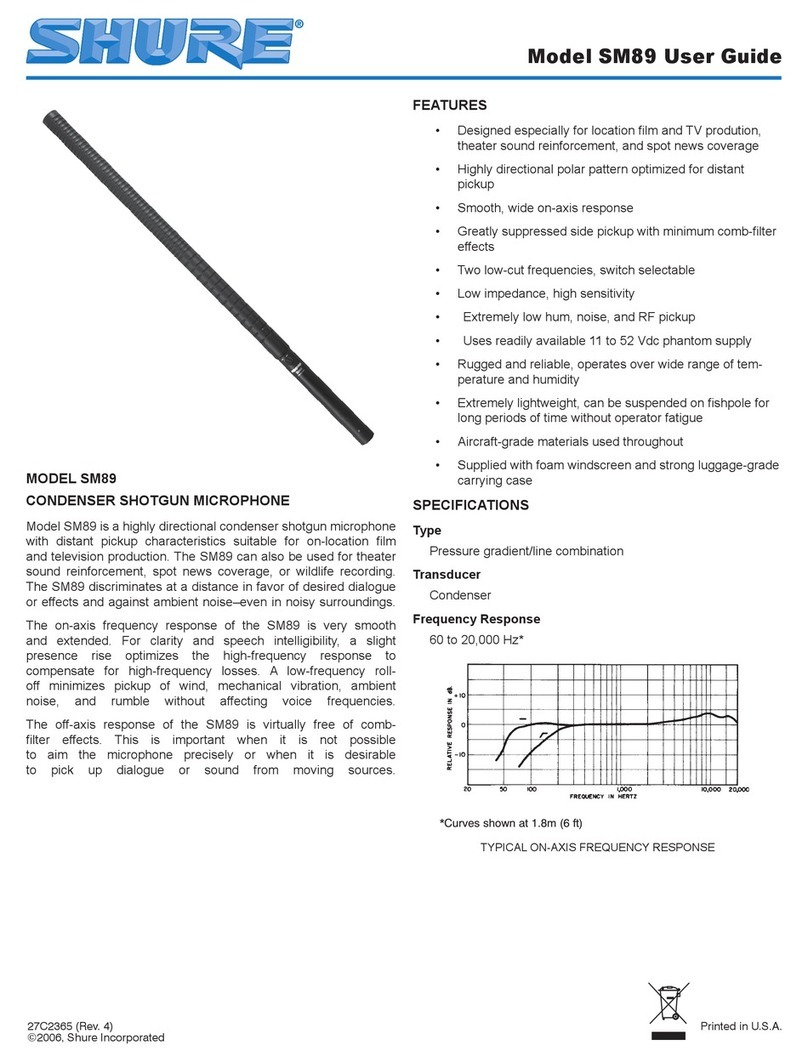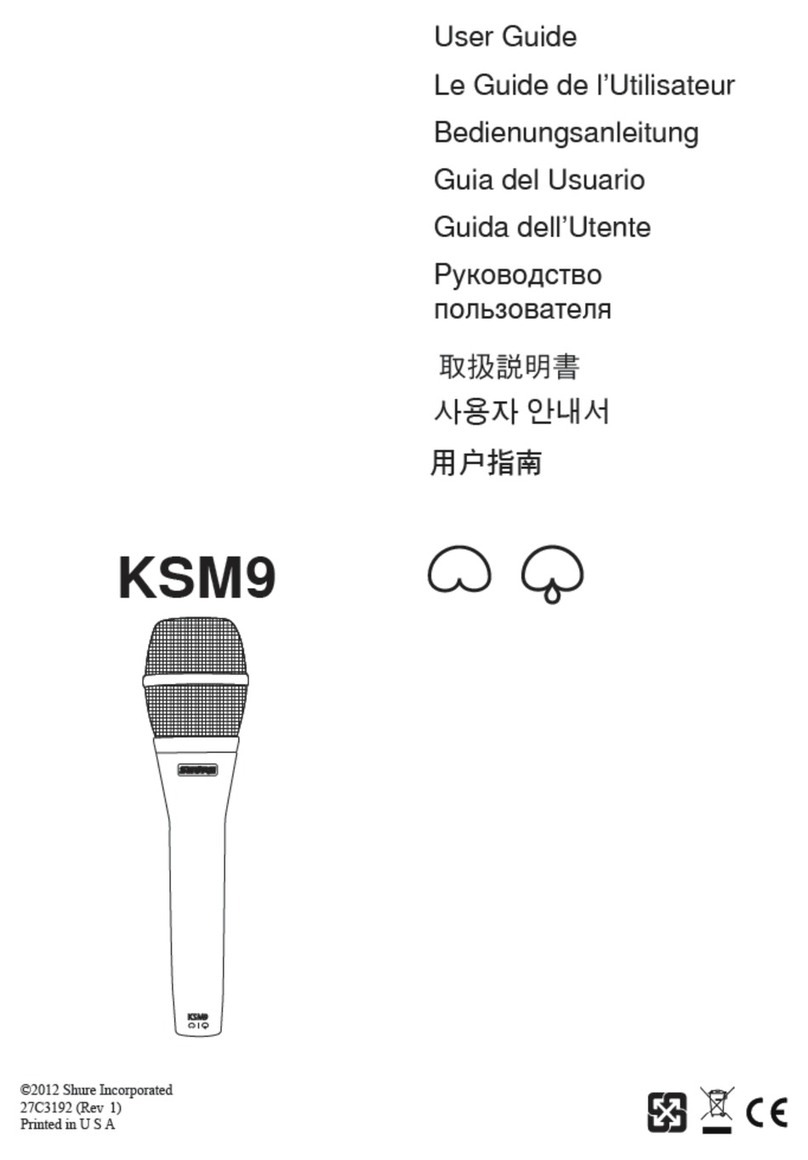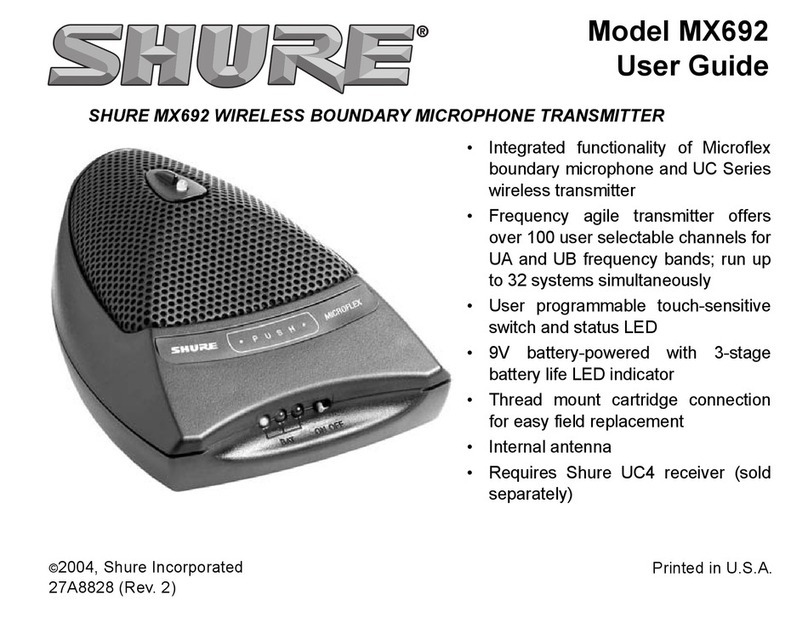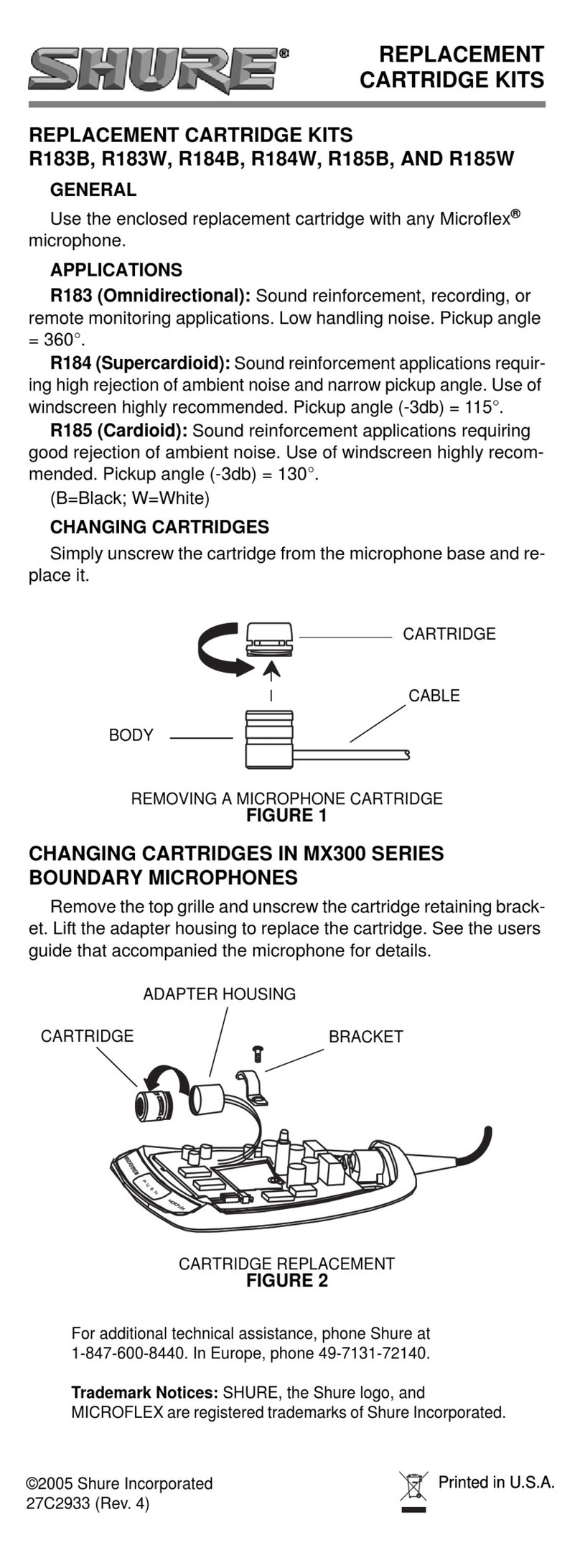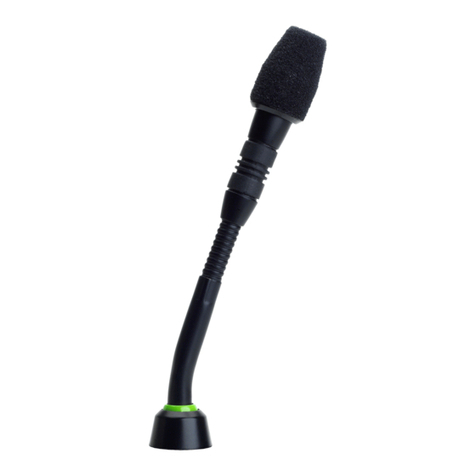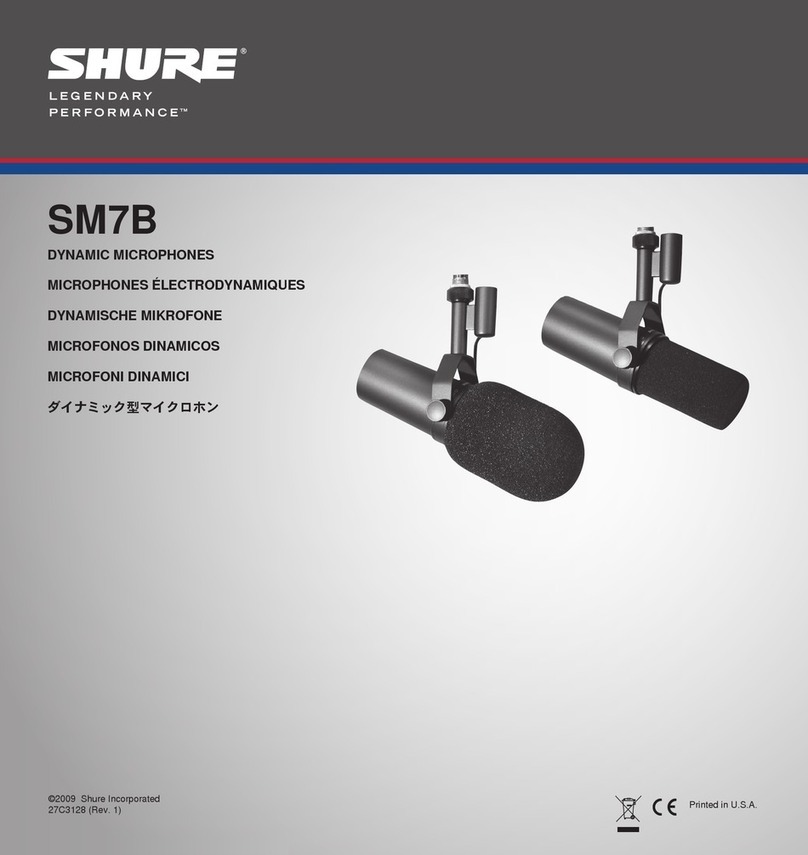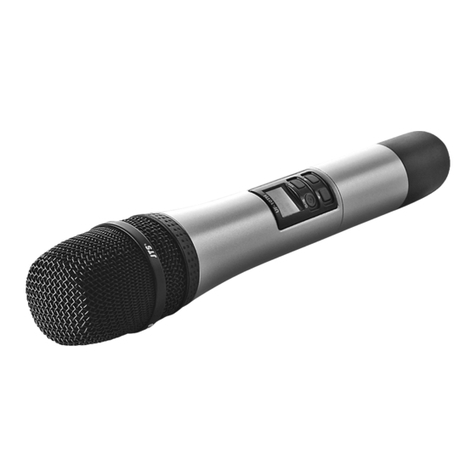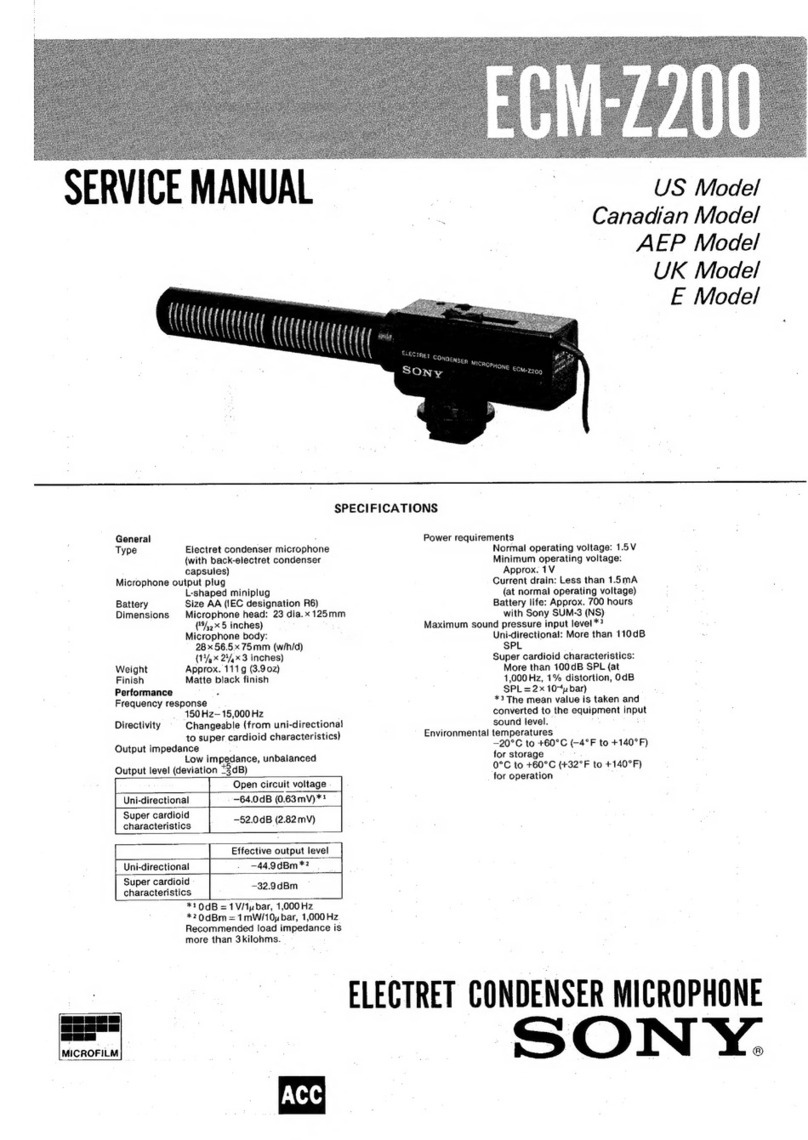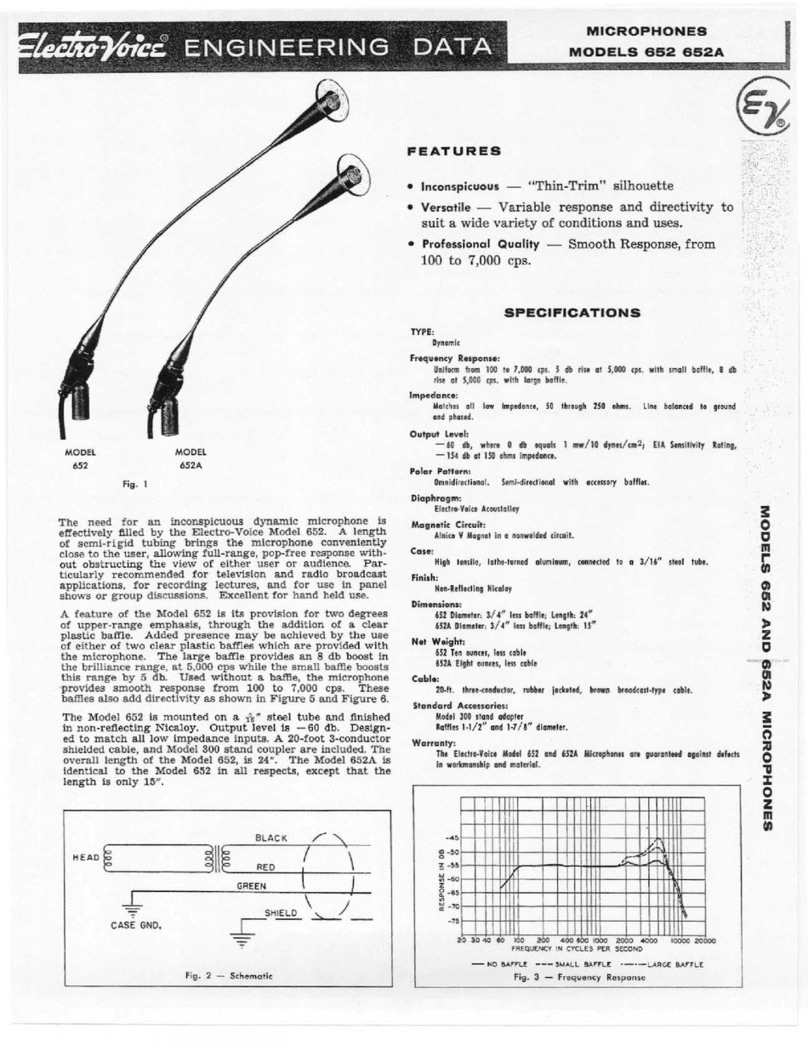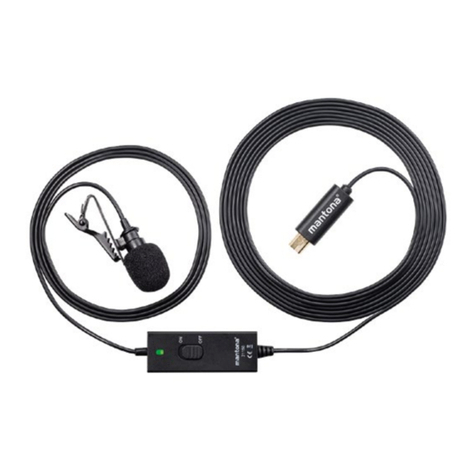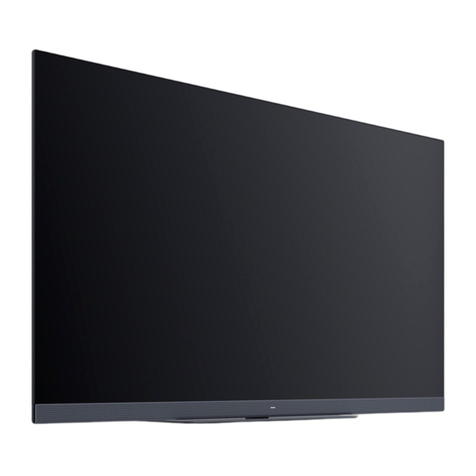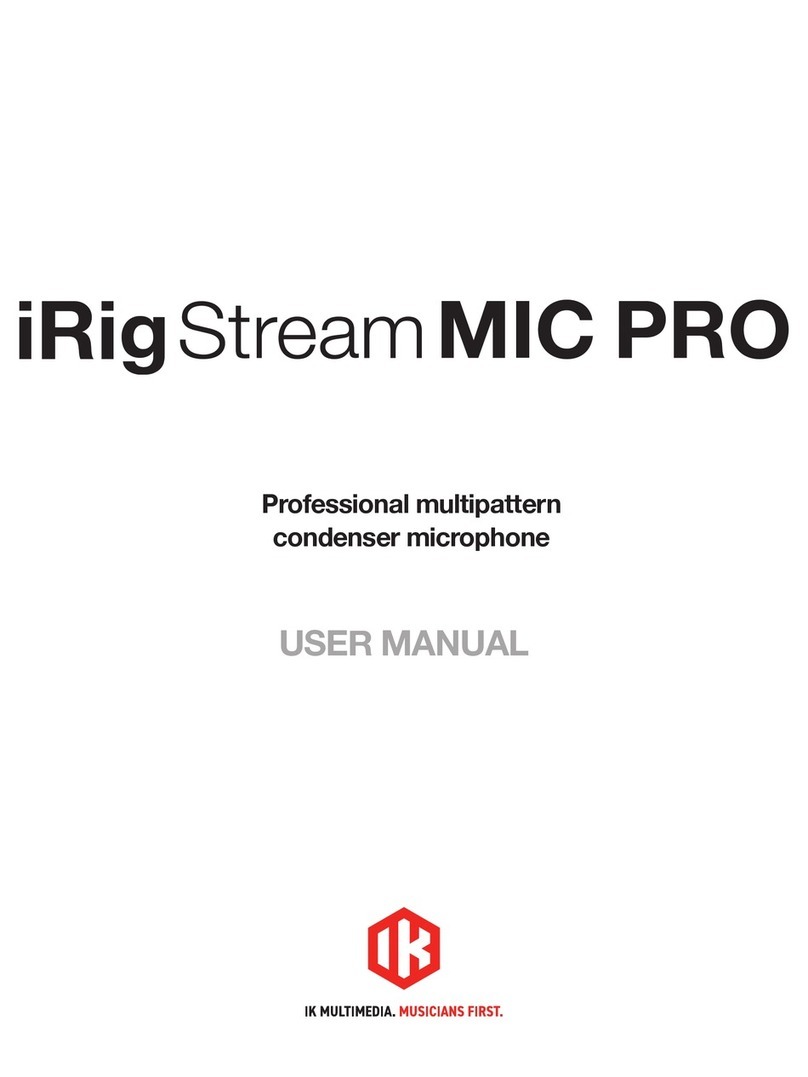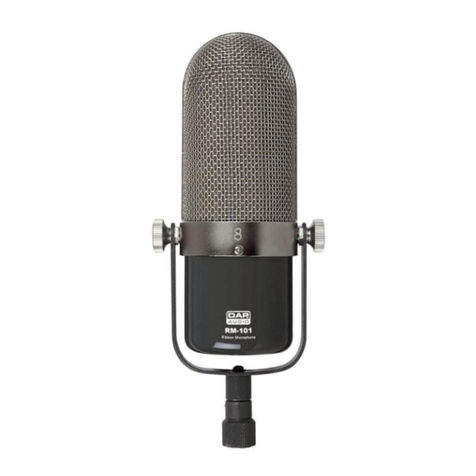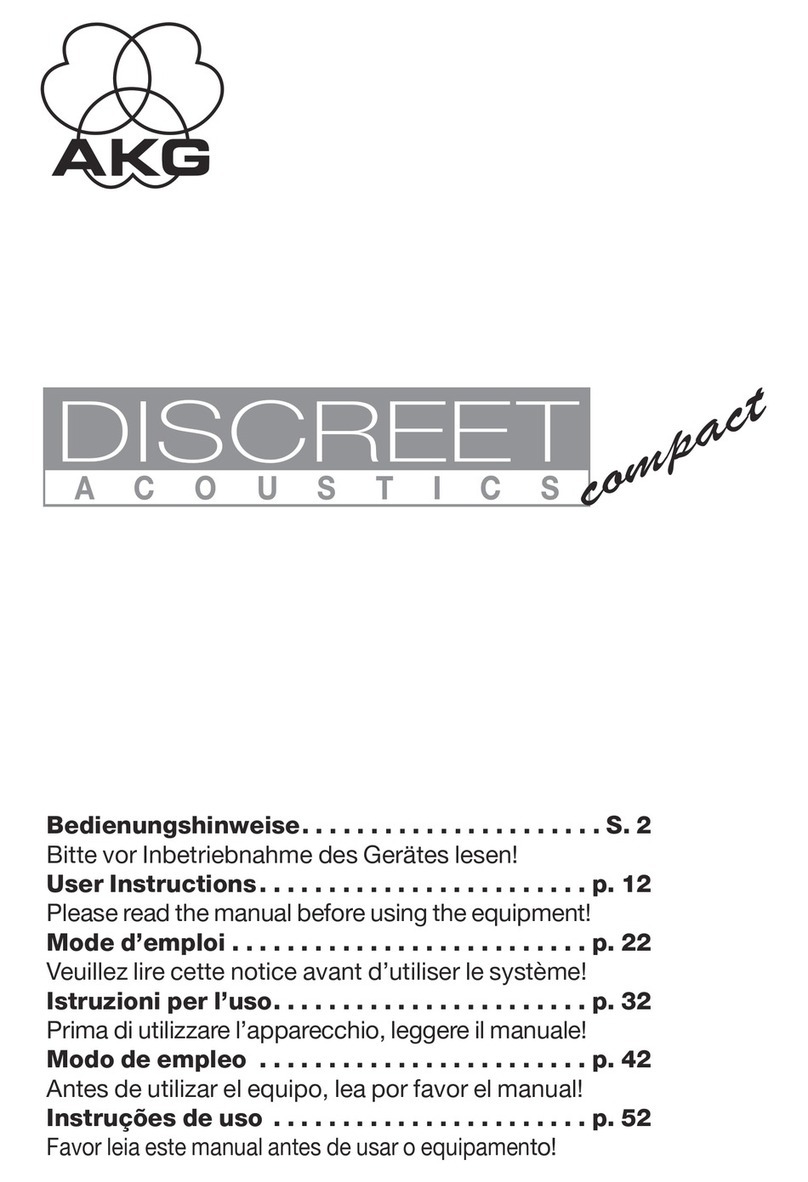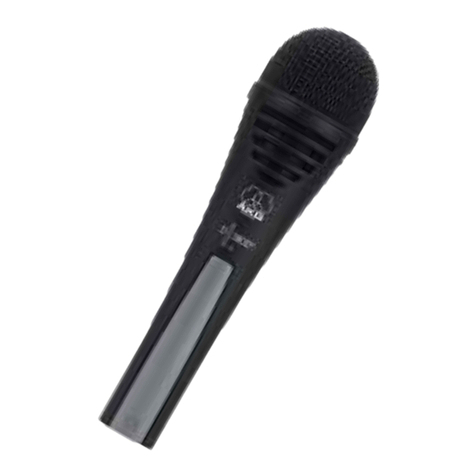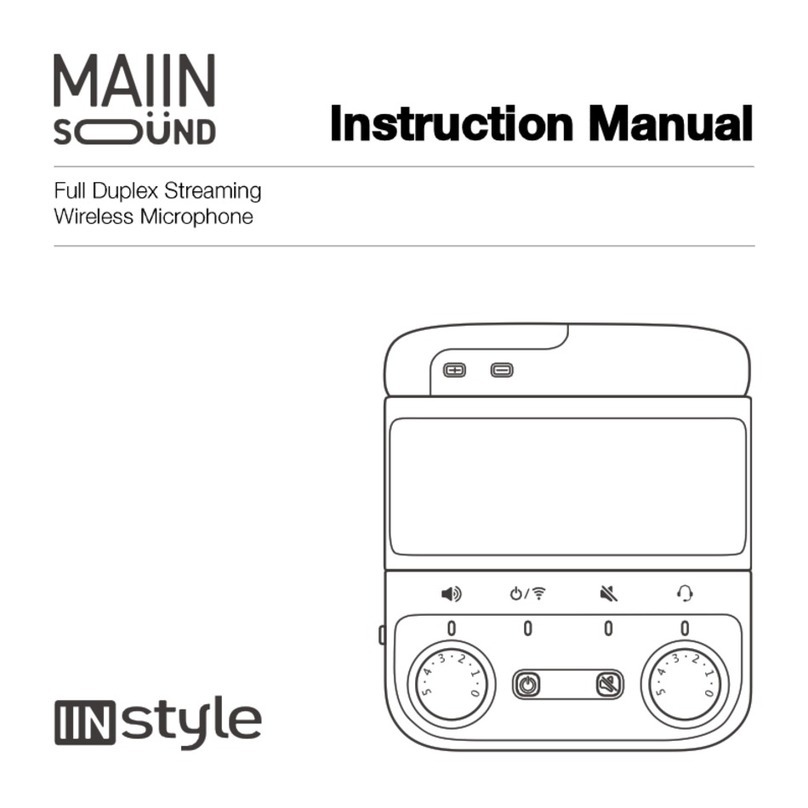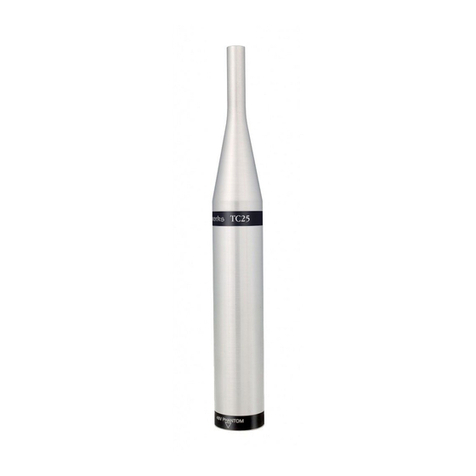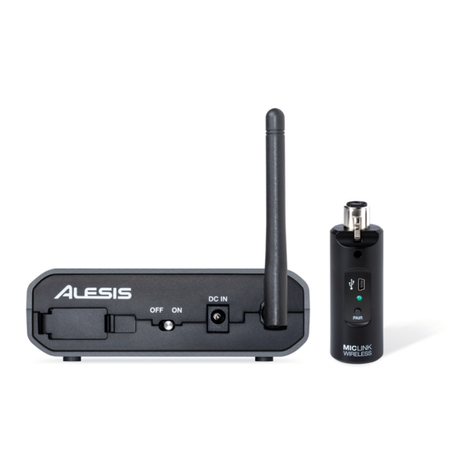
©2013 Shure Incorporated
27A20375 (Rev. 1)
Model Variations
①Gooseneck Length
12: 12" gooseneck
18: 18" gooseneck
②Mute Button and LED Indicator*
S: Includes mute button and bi-color LED on microphone body
RS: Includes mute button and On/Off colored indicator ring
*The Standard model does not feature a mute switch or LED
③Color
B: Black
④Polar Pattern
C: Cardioid
Centraverse Gooseneck Microphone
The Shure Centraverse CVG is a professional goose-
neck electret condenser microphone for use in general
installed sound reinforcement applications. With dual
gooseneck sections for full articulation, the CVG12/18
provides scalable, best-in-class performance in a wide
variety of locations, including podiums and desktops.
Features
• Cardioid polar pattern with tailored response for
speech
• Dual-section gooseneck enables ease of
positioning and placement options
• Three model variations with inline preamps:
standard, mute switch, and light ring indicator
• Available in 12” (30.4 cm) and 18” (45.7 cm)
gooseneck lengths
• Commshield® technology guards against unwanted
RF interference from portable wireless devices
(smartphones, etc.)
• Included flange mount and snap-fit windscreen
(Shown with optional CVD desktop base)
Note: Model availability depends on region. See
your local Shure dealer or distributor for details.
Guidelines For Use
1. Maintain a distance of approximately 15 - 30 cm
(6 - 12 in.) between the sound source and the
microphone.
2. Always use the supplied windscreen to control plo-
sives and wind noise.
22 mm
(7/8 in.)
Mute Button Operation
Press the button on the microphone body to turn
the mute on/off. The standard model does not fea-
ture a mute button.
1. CVG12S: Mute is indicated by an LED on the
microphone body:
• Green = Microphone is on
• Red = Microphone is muted
2. CVG12RS: Mute is indicated by a light ring on
the microphone head:
• Red = Microphone is on
• Off = Microphone is muted
Installation
1. Drill a 22 mm (7/8 in.) hole in the mounting surface for the flange and three additional holes for the screws.
2. Screw the flange into place, and then set the microphone into the center hole.
3. Connect the microphone to a mixer or P.A. system using an XLR cable.
Note: This microphone requires +48V phantom power to operate.
Centraverse™ Series
Installed Sound Microphones
CVG
